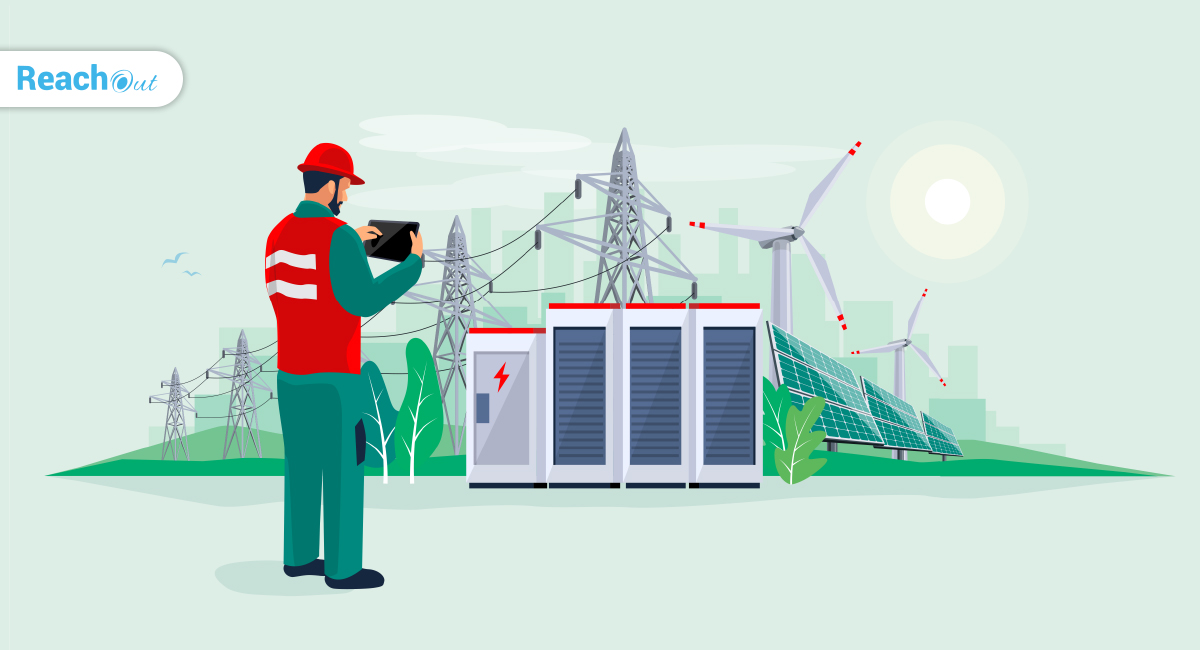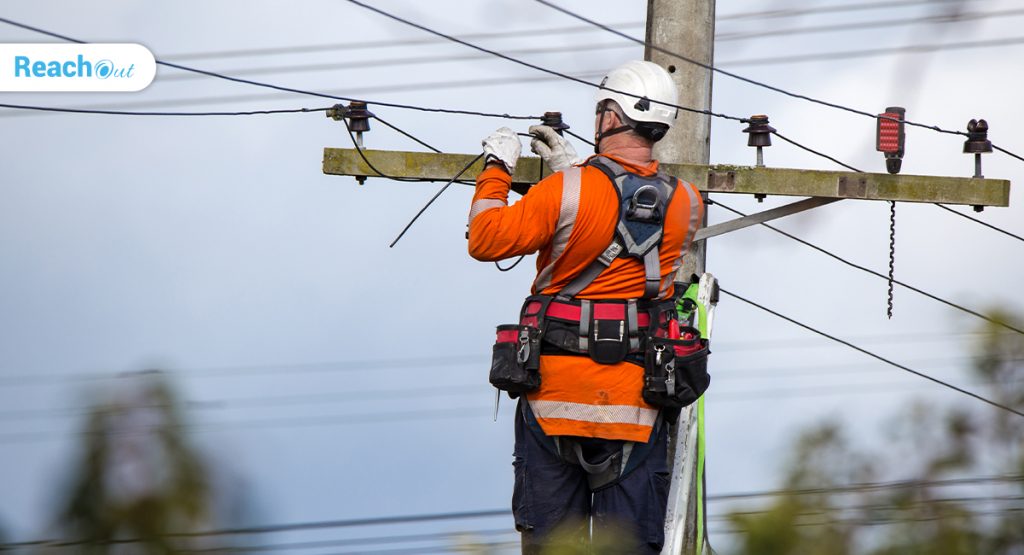
The Recovery Path for Power and Utilities in the Post-COVID World
The COVID-19 pandemic has disrupted businesses like never before, leaving many in a state of total devastation. For the utilities industry, it was a mixed bag. The energy industry, being an essential service, remained operational throughout the pandemic. But power and utilities went through their fair share of disruptions.
Stay-at-home mandates disrupted the supply chain and restricted field technicians and service engineers from serving their customers. On-site social distancing restrictions adversely affected projects and even crucial maintenance tasks. Border controls disrupted supply chains and caused a shortage of everything from solar panels to semiconductors, from balsa required for wind turbines to cardboard and more. Measures such as quarantines for workers and limits on vehicle capacity disrupted working models and increased costs. Time-tested notions of efficiency, such as JIT inventory (Just in time inventory), doing more with less staff, and more, went for a toss.
Lockdowns and home quarantines also resulted in a shift in energy use patterns. Energy demand from tech companies and homes increased. But energy demand declined in traditional industries, commercial spaces, and retail shops. Overall, the global energy demand reduced by one-third during the peak of the pandemic. Reduced income pushed many people and small businesses to the risk of energy poverty. In addition, several countries allowing households to defer utility payments will add to the financial stress for utilities.
As the world moves on from crisis response to recovery, power and utilities are also on the path to recovery. However, the extent of the recovery depends on how well they adapt to the changes dictated by the new normal.
Read more: Why Utility Companies Need to Improve Field-Level Customer Service
Here are a few ways the utilities industry can follow to expedite recovery in a post-COVID world.
1. Improve Focus on Efficiency and Agility
When the COVID-19 crisis became severe, many companies in the power and utilities sector formed crisis teams and task forces to stabilize supply lines and manage critical operations. This inadvertently made the enterprise agile. Operational decisions that took many weeks, and many meetings, took place in hours. Zoom meetings replaced inefficient conference rooms. On-site technicians received video support while fixing equipment or machinery.
Post-pandemic, the utilities should overhaul their operating models to make flatter, agile models permanent. Teams now collaborate remotely across business functions and geographies. HR identifies talent from across the world and empowers them to operate remotely. Expert technicians work from centralized hubs or their homes. They use field collaboration tools to offer remote assistance to novice field technicians and self-service customers.
2. Better Risk Management
Energy supply had already surpassed demand before the pandemic. But the pandemic induced a decline in the industrial consumption of energy, despite depressed prices. Utility demand will eventually return to the pre-pandemic levels, but the journey will be volatile.
The utilities industry now takes the long-term impact of changing economics on their financials seriously and manages their risk better. Power and utilities, especially those with a large generation footprint, take a relook at their risk management strategies to cope with the volatility.
The energy industry needs to:
- Set up risk limit dashboards, advanced scenario modeling, and extensive stress-testing to mitigate risks.
- Invest in analytics to make sense of operational and customer data, and make informed decisions. Advanced analytics enables the energy industry to segment customers and take measures to mitigate risk. For instance, many utilities use customer profile details and delinquency rate metrics to identify customers devastated financially by the pandemic and offer tariff adjustments and revised payment schedules.
- Set up teams to identify areas for instituting or strengthening safety measures.
3. Shift to Renewable Energy
The post-pandemic world is expected to make a decisive switch to clean and renewable energy. The utilities industry leverages the increasing preference for renewables. They roll out “clean” products and overhaul their services to cater to the growing renewables space.
The EU has set aside 25% of its €850 billion COVID-19 recovery package to build energy-efficient infrastructure. The major chunk of this investment will be in clean technology, including batteries, carbon capture, installing EV charging points are more. Grants and tax incentives subsidize the higher capital costs of renewable heat options. In addition, solar thermal targets and mandates for renewables in buildings promote deploying heat pumps and solar water heaters.
The corporate renewables market has especially flourished despite the pandemic. The United States had 41,000 MW of corporate-tied renewable capacity before the pandemic struck. S&P Global Market Intelligence estimates over 20,000 MW of new corporate wind and solar capacity, making 2020 the most active year in the corporate renewables space! Leading the pack is Amazon, which added 6,000 MW of new wind and solar power over the year, while Facebook Inc. added 3,000 MW of new capacity. Alphabet Inc., another giant, signed deals for about 1,000 MW of new renewable capacity. Such large-scale expansion is a fallout of increasing demand for the services of these companies, owing to stay-at-home mandates.
Wind’s share of the corporate renewables market, which was 82% in 2019, will drop to 53%, owing to the solar surge. Solar energy comprises nearly two-thirds of the corporate PPA capacity announced in 2020. Corporate buyers are also showing an increasing propensity for energy storage.
There is no growing back for renewables. RE100, an initiative of organizations committed to going 100% renewable, has grown to over 300 members from fewer than 200 in 2019. The implications for the utilities industry are clear.
- Shape up to service the renewables sector.
- Invest in skill upgrades of the workforce.
- Stay abreast of market trends and gain a valuable first-mover advantage.
4. Invest in Digital Technologies
Power and utilities reconsider their technology priorities post-pandemic. Instead, they invest in digital transformation for faster decision-making capabilities and agility to cope with the fluid business environment.
Read more: Five Ways ReachOut’s Contractor Management Software Helps Utility Companies
Best in breed utilities:
- Deploy field management suite to coordinate the activities of their field agents. They seek efficiency improvements in scheduling, dispatching, audits, invoicing, and other vital processes.
- Enable real-time tracking and collaboration with field agents to communicate in real-time, ensure seamless access to customer data, and facilitate remote assistance.
- Digitalize critical operational areas such as inventory management, finance, and human resources. Linking these enterprise systems through APIs ensures the free flow of information. The transparency and visibility on offer eradicate silos and ensure smooth operations.
- Invest in analytics. Analytical insights allow making informed decisions on growth estimates, product mix, pricing, operational policies, HR strategies, financial planning, and more.
When the pandemic hit, the energy industry had to change its typical mode of interaction with customers. Digital channels became the only means of contact with the customer in a locked-down world. As a result, customer-focused digital initiatives, such as customer-facing apps, online tracking and payments solutions, remote and self-service maintenance options, and more are here to stay. These tools become the key drivers of customer satisfaction.
Read more: How Field Service Software is Revolutionising the Utility Industry
The roaring twenties of the last century, which followed the Spanish Flu of 1919, is all set to repeat, at least for utilities. But only proactive companies, who commit to technology upgrades and change to cope with the new realities, will benefit from the boom. So sign up for ReachOut asap and reap the benefits of smart field service management.
Aarathy
With over a decade of experience in the technology sector, Aarathy is passionate about improving field service efficiency through digital innovation. She is particularly interested in topics such as field service trends, service automation, and strategies for implementing digital transformation in service management.
More posts by Aarathy




